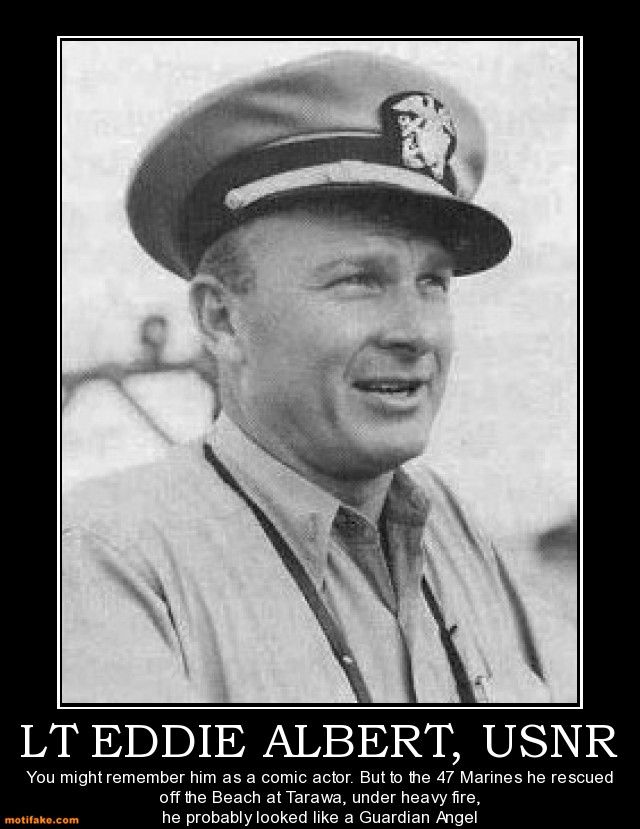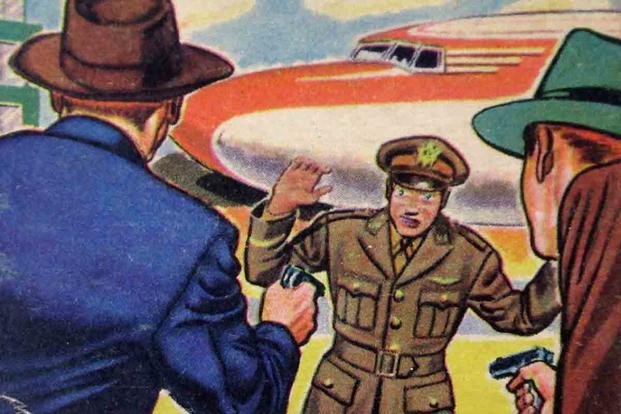Marshall Dillon too.
Although Arness wanted to be a naval fighter pilot, he was concerned his poor eyesight would bar him. However, his 6-ft, 7-in (2.01 m) frame ended his chances because the limit for aviators was set at 6 ft, 2 in (1.88 m). He was
drafted into the
US Army and reported to
Fort Snelling in March 1943.
[4] As a
rifleman, he landed on
Anzio Beachhead on January 22, 1944, with the 2nd
Platoon, E
Company, 2nd
Battalion,
7th Infantry Regiment of the
3rd Infantry Division. Arness – due to his height – was the first man to be ordered off his
landing craft to determine the depth of the water; it came up to his waist.
[4] He was severely wounded in his right leg during the
Battle of Anzio,
[7]and medically evacuated from Italy to the U.S., where he was sent to the 91st General Hospital in
Clinton, Iowa. His brother, Peter, (later known as actor
Peter Graves), came to see him when he was back in the U.S., beginning his long recuperation, assuring him to not worry about his injuries, that likely he could find work in the field of radio. After undergoing several surgeries, he was honorably discharged from the Army on January 29, 1945.
[8] His wounds continued to trouble him, though, throughout the remainder of his life. In his later years, he suffered with chronic leg pain that often became acute, and was sometimes initiated when he was mounted on horses during his performances on
Gunsmoke.[9][7] His military decorations included the
Bronze Star, the
Purple Heart, the
American Campaign Medal, the
European–African–Middle Eastern Campaign Medal with three bronze
battle stars, the
World War II Victory Medal, and the
Combat Infantryman Badge.
[9][10]







